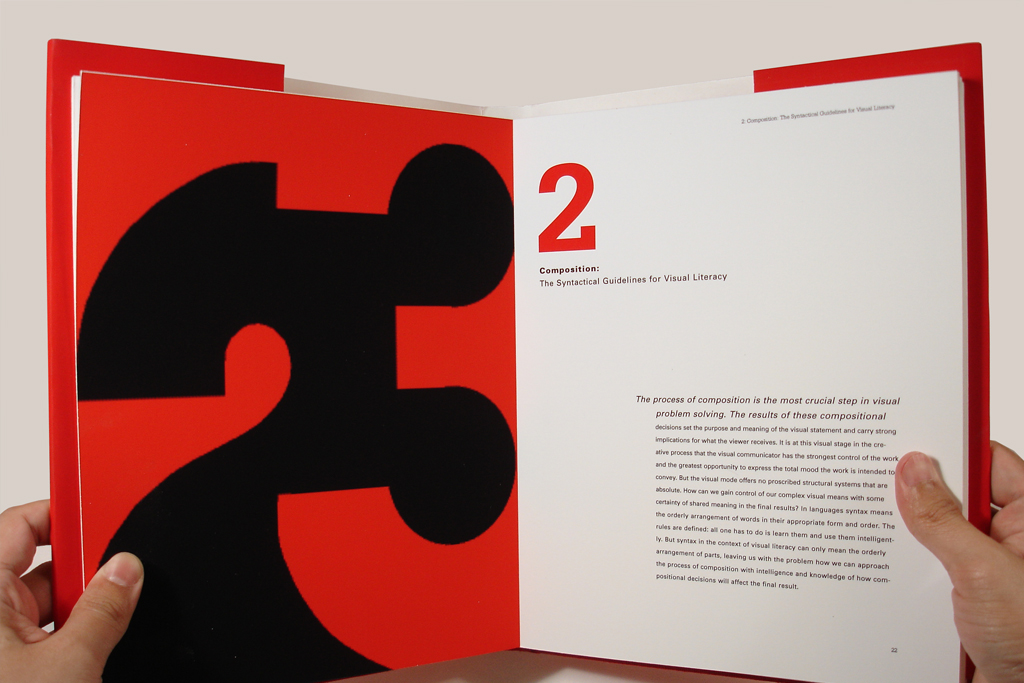 |
TITLE // A Primer of Visual Literacy
DATE // 2006
CLIENT // Academy of Art University coursework
Deliverables // Book Design
Redesign the book A Primer of Visual Literacy by Donis A. Dondis. The redesign should
reflect the importance of Dondis's work as well as the content contained within the book.
The content of A Primer of Visual Literacy is quite useful to designers and artists alike, and thus the book that houses that information should be treated as such. The simple paperback design detracted from the importance of the information within the book, and thus the redesign increased the size of the book itself was well as encased the contents in a hardbound cover to illustrate the importance of the content. The redesign was also adorned in red and the cover was covered in cloth and embossed with one of Dondis's illustrations to further stress the importance of this work.
Responding to the need she so clearly perceives, Donis A. Dondis, a designer
and teacher of broad experience, has provided a beginning text for art and design students
and a basic text for all other students-those who do not intend to become artists or designers
but who need to acquire the essential skills of understanding visual communication at a time
when so much information is being studied and transmitted in non-verbal modes, especially
through photography and film. Understanding through seeing only seems to be an obviously
intuitive process. Actually, developing the visual sense is something like learning a language,
with its own special alphabet, lexicon, and syntax. People find it necessary to be verbally
literate whether they are "writers": or not; they should find it equally necessary
to be visually literate, "artists" or not.
A Primer of Visual Literacy
is designed to teach students the interconnected arts of visual communication.
The subject is presented, not as a foreign language, but as a native one that the student
"knows" but cannot yet "read". The analogy provides a useful teaching method,
in part because it is not overworked or too rigorously applied. This method of learning to
see and read visual data has already been proved in practice, in settings ranging from Harlem
to suburbia.
Appropriately, the book makes some of its most telling points through visual means. Numerous
illustrated examples are employed to clarify the basic elements of design (teach an alphabet),
to show how they are used in simple syntactic combinations ("See Jane run."), and
finally, to present the meaningful synthesis of visual information that is a finished work
of art (the apprehension of poetry...)
 |